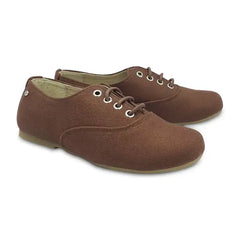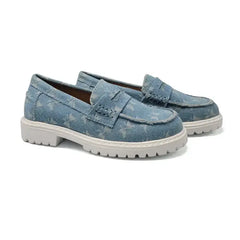Why School Shoes Need Extra Care
School shoes go through a lot every day. From running on the playground to sitting through long classes, they face constant wear. If not cared for, they wear out quickly, forcing you to buy new shoes sooner than expected. With a few simple habits, you can maintain school shoes, keep them neat, and ensure shoes last longer while staying comfortable all year. Parents can also prevent shoe odor by following a shoe odor solution routine that keeps footwear fresh and pleasant, avoiding embarrassing moments for kids during school activities. 
Choose Quality from the Start
Good shoes make a difference. Pick pairs made from strong leather or durable materials with sturdy stitching and cushioned soles. While they may cost more at first, they save money in the long run because they don’t fall apart after a few weeks. A strong, supportive shoe helps preserve school shoes by giving your child comfort and daily protection. High-quality shoes also respond better to leather shoe care methods and polish treatments, ensuring full value and durability over the course of the school year.
Daily Habits That Keep Shoes in Shape
Teach take-off & storage habits
Remind kids to undo straps or laces instead of kicking shoes off to prevent stretching. At home, place shoes on a rack or shelf instead of the floor. This simple shoe storage solution keeps pairs fresh and helps prevent odor.
Build a quick end-of-day routine
Remove insoles to air out, stuff shoes lightly with paper to retain shape, and alternate pairs when possible to allow full drying between wears.
Cleaning Made Simple: Easy Routines for Busy Parents
Weekly wipe-down
A quick wipe with a damp cloth is an easy how to wipe shoes routine. Use a soft brush on outsoles to remove grit that speeds wear.
Material-specific care
- Leather: Clean, then apply conditioner and polish; buff with a soft cloth.
- Canvas: Spot-clean with mild soap; avoid harsh soaking.
- Suede: Use a suede brush/eraser; protect with spray.
- Patent: Wipe with microfiber; use patent cleaner for scuffs.


For active kids, gently wash sneakers as needed. A light baking soda sprinkle or shoe spray supports kids’ shoe hygiene after heavy use.
Protecting Shoes from Weather Damage
Waterproof & dry the right way
Use a waterproof spray to shield against rain and stains. If shoes get soaked, dry naturally at room temperature—never on a heater—to prevent cracking and warping. Rotate between two pairs so one can fully dry while the other is worn.
The Role of Proper Fit and Rotation
Shoes that don’t fit right wear out faster. Tight shoes strain seams; loose shoes scuff and crease. Leave a little room for growth and check sizes often. Rotating between two pairs of school shoes extends lifespan and comfort. 
Quick Fixes for Common Shoe Problems
- Scuffs & light scratches: Use a scuff remover or polish and buff.
- Loose soles: Apply shoe glue and clamp per product directions.
- Frayed laces: Replace promptly to protect eyelets and fit.
- Odor: Alternate pairs, air insoles, and use deodorizing inserts or baking soda overnight.
Teaching Kids to Care for Their Own Shoes
Show simple habits: wipe after rain, air out overnight, use a drying rack, and store properly. Kids learn responsibility through kids’ shoe hygiene and will take pride in keeping pairs neat.
Knowing When It’s Time for Replacement
Even well-cared-for shoes won’t last forever. If soles are thin, toes press the front, heels slip, or comfort fades, it’s time to replace. Smart timing keeps growing feet supported and prevents injuries—use care to extend life, then upgrade when needed.
FAQ
How often should I clean school shoes?
Do a quick wipe after heavy wear and a deeper clean weekly; condition leather monthly.
What’s the best way to prevent odor?
Rotate pairs, air insoles, and use deodorizing spray or baking soda overnight.
Can I machine wash kids’ sneakers?
Hand cleaning is safest. If machine washing, use a gentle cycle in a mesh bag and air-dry only.
How do I know shoes no longer fit?
Check for toe crowding, heel slipping, or complaints of discomfort—usually every 3–6 months for fast growers.
